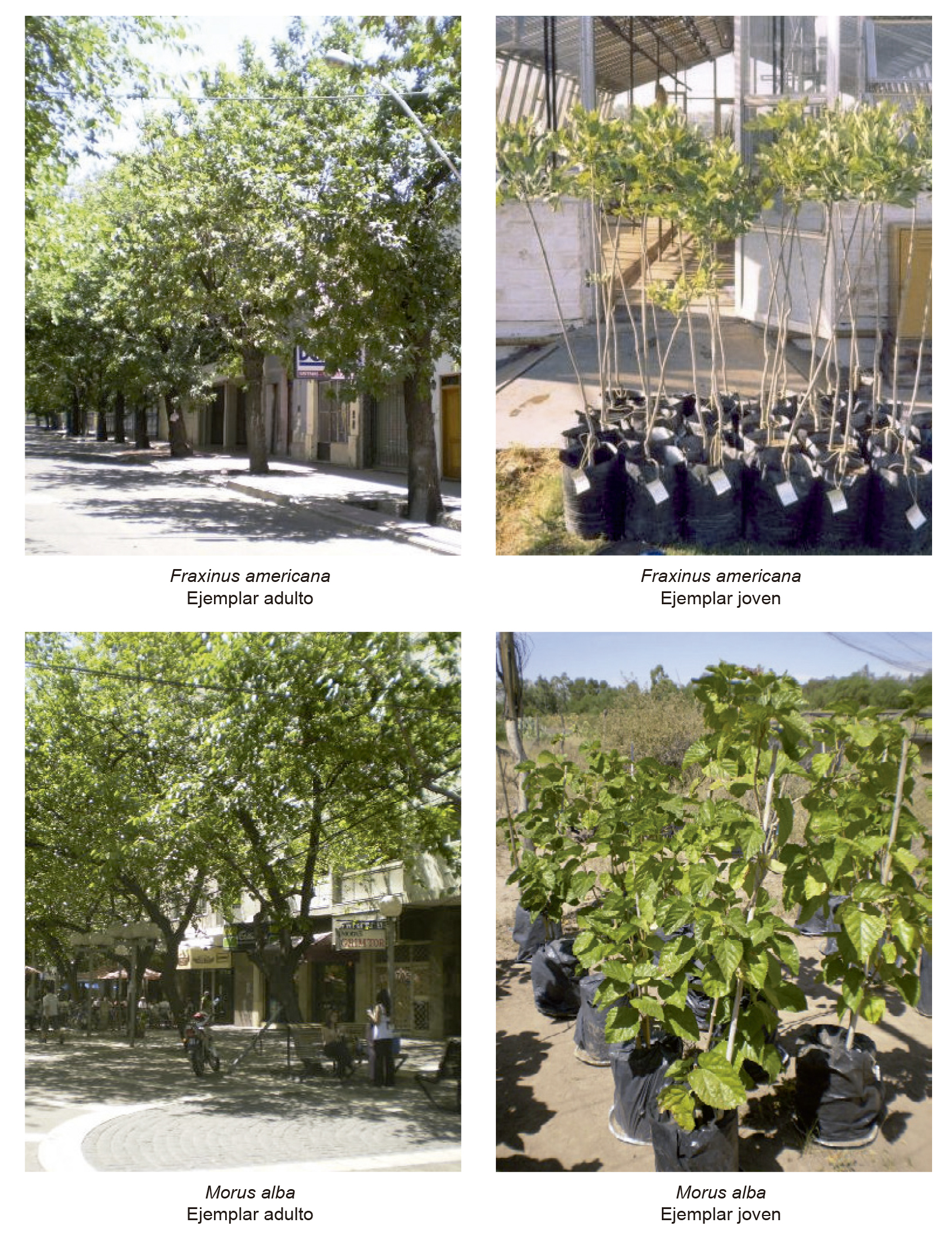Response to water deficit on tree growth from urban forestry of Mendoza city. Comparative analysis in sapling trees
Keywords:
urban forestry, water deficit, forest growth, MendozaAbstract
The objective was to evaluate the young plants response of four urban forest species at different levels of water deficit. The manipulative experiment was conducted in nursery for three growing seasons, with saplings of Platanus x hispanica cv. acerifolia (London plane), Morus alba (mulberry), Fraxinus americana (American ash) and Acacia visco (visco). The catering treatments were: control (replacement of 100% water transpired), moderate deficit watering (replacement of 66% water transpired) and severe deficit watering (replacement of 33% water transpired). Response variables measured were height, stem diameter, leaf area and annual tree-rings width. Plants under severe deficit watering showed decreases in all growth parameters considered. Acacia visco under moderate deficit watering equivalent to 66% of transpired water had a growth comparable to control. Therefore, this specie could be considered relevant to new forestations in moderate water stress conditions.

Downloads
Published
Issue
Section
License

This work is licensed under a Creative Commons Attribution-NonCommercial-ShareAlike 3.0 Unported License.
Aquellos autores/as que tengan publicaciones con esta revista, aceptan las Políticas Editoriales.


